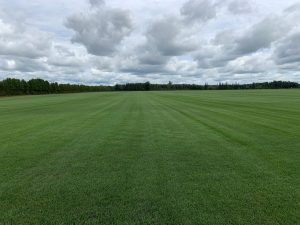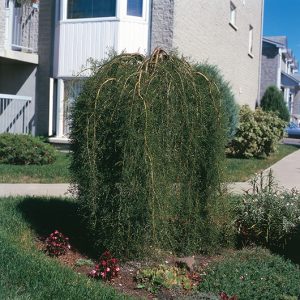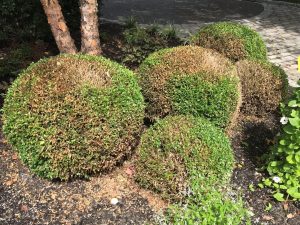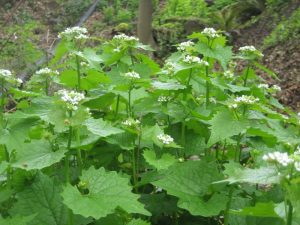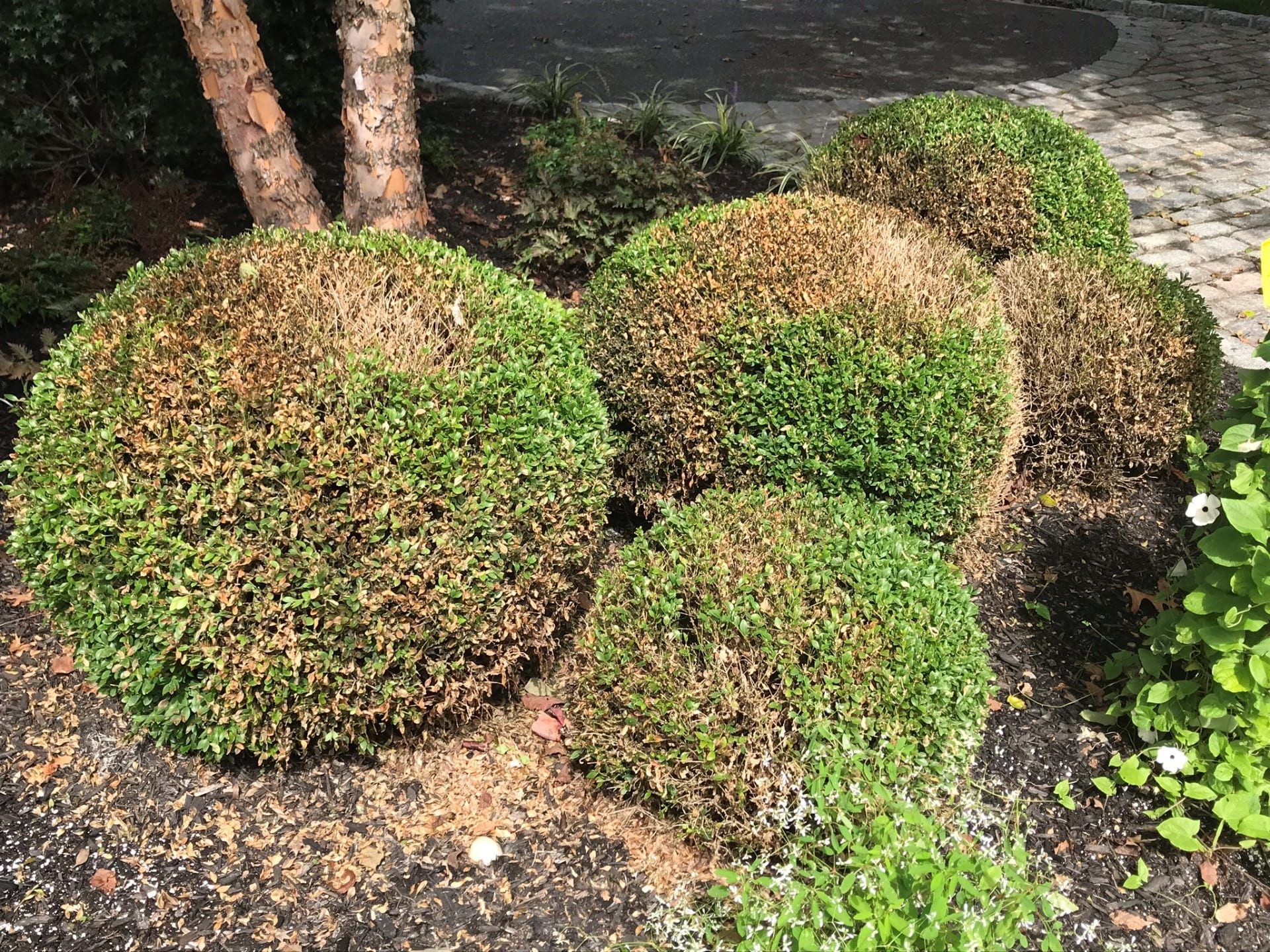
Hi, Dave here from Foxy Gardens in southwestern Ontario. Boxwoods are a staple in many Ontario gardens, admired for their dense evergreen foliage and year-round structure.
But when leaves start turning brown, yellow, or even white, many homeowners are left wondering: Is this boxwood blight? Or just winter burn? While both issues can look similar at first glance, they have very different causes, treatments, and long-term implications.
In this guide, we’ll break down the key differences between boxwood blight and winter burn, how to diagnose each, and what to do next.
What Is Boxwood Blight?
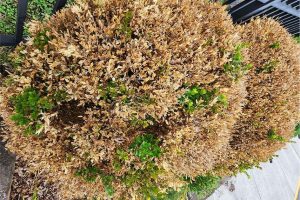
Boxwood blight is a serious fungal disease caused by Calonectria pseudonaviculata. First discovered in North America in the early 2010s, it has become a growing concern for Ontario gardeners due to its aggressive spread and devastating effect on boxwood shrubs.
Symptoms of Boxwood Blight
-
Circular brown spots on leaves, often with dark borders
-
Rapid defoliation — leaves fall off very quickly
-
Black streaks or cankers on green stems
-
Thin or bare appearance, often starting from the bottom and moving upward
-
Leaf litter under the plant (a key clue)
-
Little to no new growth in spring after infection
This disease thrives in warm, humid conditions, particularly in shaded areas with poor air circulation.
What Is Winter Burn?
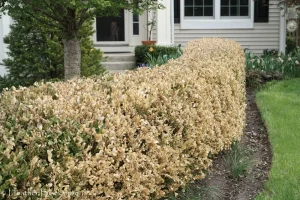
Winter burn, on the other hand, is not a disease — it’s an environmental stress reaction. It occurs when boxwoods (and other evergreens) lose more moisture through their leaves than their roots can replace during winter months.
This is especially common in Southern Ontario, where freeze-thaw cycles and intense winter sun are frequent.
Symptoms of Winter Burn
-
Reddish, yellow, or white discoloration on exposed parts of the plant
-
Browning of leaf tips and edges
-
Damage is often directional, affecting the side facing winter sun or wind
-
No stem lesions
-
No leaf spotting or spotting with borders
-
Gradual improvement in spring if the roots are healthy
Winter burn tends to be cosmetic and will often correct itself over time.
Visual Comparison: Blight vs. Burn
| Symptom | Boxwood Blight | Winter Burn |
|---|---|---|
| Leaf Color Changes | Brown spots with black margins | Yellow, reddish, or white |
| Leaf Drop | Rapid and extensive | Rare or gradual |
| Stem Damage | Black streaks or lesions | No stem damage |
| Directional Pattern | Evenly throughout the plant | Often one side (sun or wind-facing) |
| Seasonal Appearance | Any time in warm, humid conditions | Winter or early spring |
| Recovery Potential | Low without intervention | High with time and pruning |
Causes and Conditions
Boxwood Blight Causes
-
Spread through infected nursery stock, contaminated tools, or leaf litter
-
Thrives in high humidity, poor air circulation
-
Can overwinter in fallen leaves and infect healthy shrubs the next year
Winter Burn Causes
-
Cold, dry winds combined with frozen soil
-
Late-season growth that hasn’t hardened off
-
Salt spray from roads and sidewalks
-
Reflected sun on south- or west-facing walls
Diagnosis Tips for Gardeners
-
Check for leaf spots: Are they circular with dark borders? That leans toward blight.
-
Inspect the stems: Any black streaks or lesions? Blight is likely.
-
Look under the plant: Is there a thick layer of dropped leaves? Another blight sign.
-
Timing and exposure: Did damage appear after a harsh winter, mostly on one side? More likely winter burn.
-
Recovery observation: Plants with winter burn often bounce back in spring with pruning and water.
How to Treat and Prevent Boxwood Blight
Treatment
-
Remove and bag infected leaves and branches
-
Disinfect pruners between every cut
-
Avoid overhead watering
-
Use fungicides like chlorothalonil if diagnosed early (not curative, only preventative)
-
In severe cases, full removal of the plant and roots may be needed
Prevention
-
Space boxwoods to promote airflow
-
Buy only from certified nurseries
-
Choose blight-resistant cultivars such as ‘Green Gem’ or ‘Green Mountain’
-
Mulch and water properly, avoiding splash-up to leaves
How to Treat and Prevent Winter Burn
Treatment
-
Prune affected areas in spring once new growth appears
-
Deep water in fall before freeze-up
-
Avoid fertilizing late in the season, which can promote soft growth
Prevention
-
Apply anti-desiccant sprays in late fall (e.g., Wilt-Pruf)
-
Wrap boxwoods in burlap or install wind barriers
-
Mulch around the base to regulate soil moisture and temperature
-
Avoid road salt exposure or rinse shrubs in spring
Can Both Happen at Once?
Yes — it’s possible (though rare) for boxwoods to suffer winter burn damage and then become infected with boxwood blight in spring, particularly if dead or stressed tissue becomes vulnerable.
This is why close monitoring and early diagnosis are key.
When to Call a Professional
If your boxwoods are looking bare, losing leaves rapidly, or you’re unsure of the cause, it’s wise to call:
-
A local horticulturist
-
A certified arborist
-
Your county extension office (in Ontario, contact OMAFRA or a Master Gardener chapter)
They can confirm whether you’re dealing with a fungal blight or just the aftermath of a harsh Ontario winter.
Conclusion: Know the Signs, Act Quickly
Boxwood blight and winter burn might look similar, but understanding their key differences is essential for proper care. While blight is a contagious and sometimes fatal fungal disease, winter burn is more of a temporary environmental setback.
In both cases, early detection, clean pruning, and good garden hygiene are your best tools for recovery and prevention.

